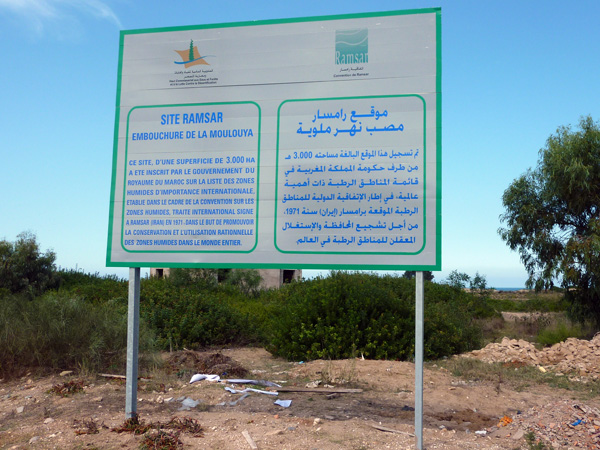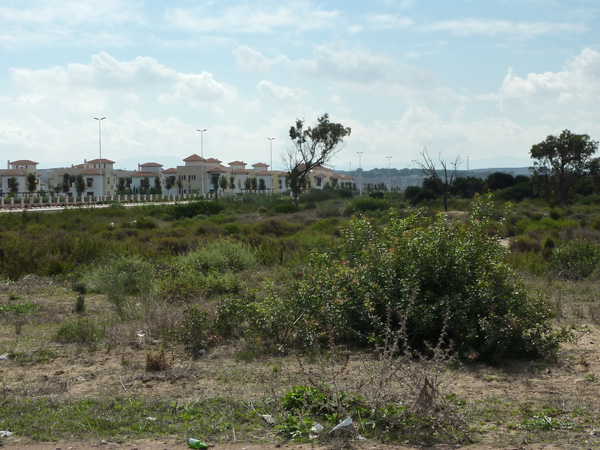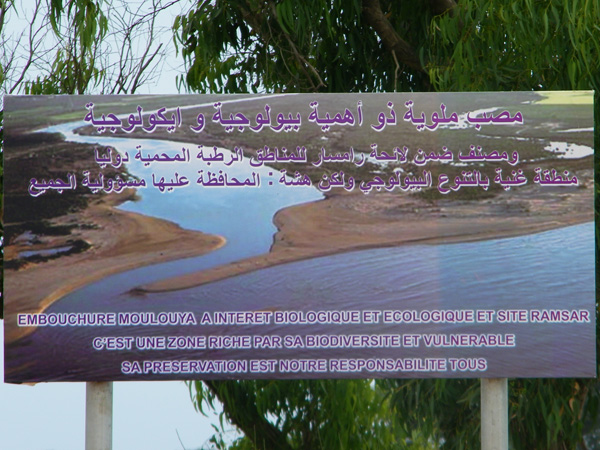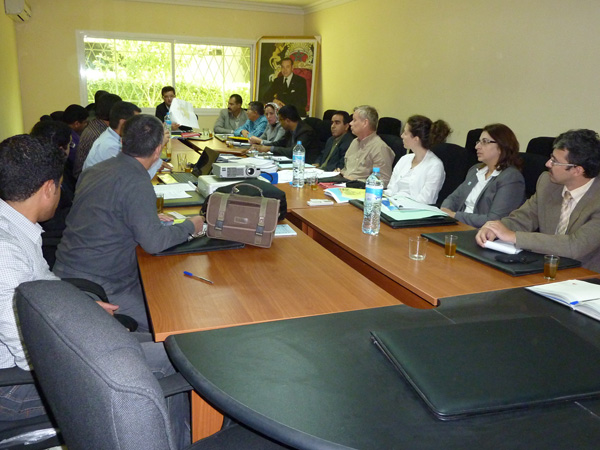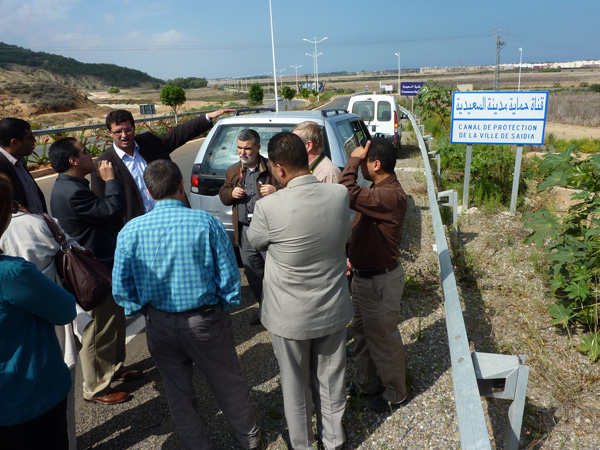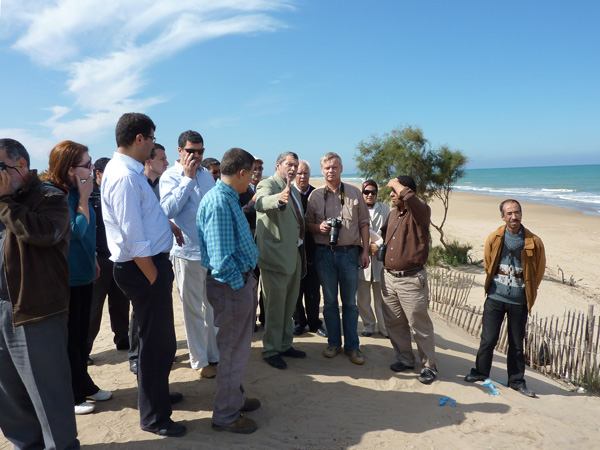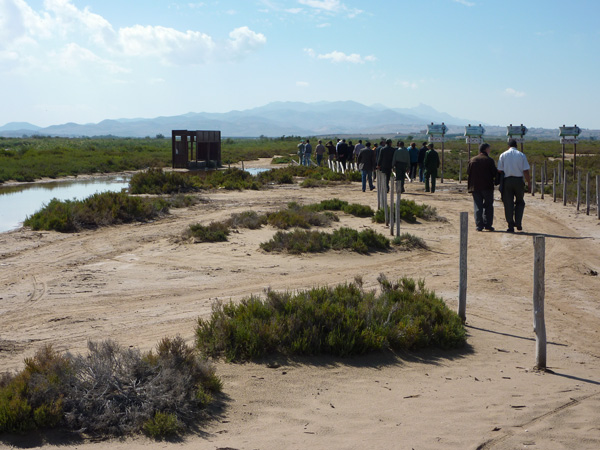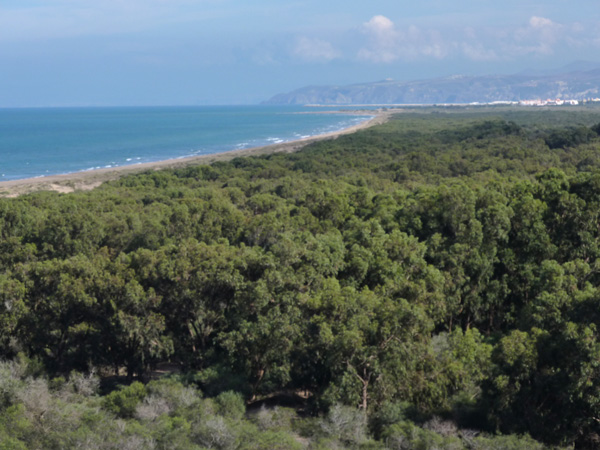Morocco: a Ramsar Advisory Mission team visits the site “Embouchure de la Moulouya”.
Development of tourism on the Mediterranean coast of Morocco
A Ramsar Advisory Mission was undertaken jointly with the Convention on Migratory Species (CMS) and the Agreement on African-Eurasian Waterbirds (AEWA) in Rabat and the area of Saïdia, on the Ramsar Site n° 1478 “Embouchure de la Moulouya” from 12 to 16 October 2010.
|
|
On the boundary of the Ramsar Site “Embouchure de la Moulouya”, east side | Ramsar Site (foreground) and on the other side of the road, the tourist resort (background, left side) |
This mission of technical assistance, invited by the Moroccan High Commissioner of Forestry, Combating Desertification, the Moroccan Ramsar Administrative Authority and funded by the Swiss Grant for Africa programme, was organized to address the concerns related to the development of tourist facilities in the vicinity of the Ramsar Site, well-known for its avifauna and high biodiversity.
Alexia Dufour, Regional Affairs Officer for the Ramsar Secretariat led the mission and it included Patrick Triplet (lead consultant), Mohammed Dakki (STRP national focal point), Maria J. de Lope (representing WWF) and Imad Cherkaoui (representing CMS and AEWA). The mission team met in Rabat with stakeholders from the government, representatives of the national Ramsar committee, and in Oujda and Saïdia, local stakeholders, both governmental and non-governmental, including tourist infrastructure developers and local NGOs. In order to obtain a full and comprehensive picture of the issues at stake, the team also visited key areas of the Ramsar Site and some of the new tourist infrastructures built near the Ramsar Site.
|
|
Awareness raising signs in the Ramsar Site | Meeting with some of the local stakeholders in Oujda in the office of « direction régionale des Eaux et Forêts, de la Lutte Contre la Désertification de l’Oriental » |
Based on the interviews, visits and with the provided documentation, the mission assessed the situation and formulated 25 concrete recommendations available in the mission report that was formally approved by the Moroccan Ramsar Authority (see pdf in French). In short, the mission noted that the development of the adjacent tourist infrastructures caused or accelerated a series of events and behaviours that led to a decline in the site biodiversity. However, the site still has good ecological potential.
|
|
Field visit : flood protection channel of the city of Saïdia and of the tourist resort with collected water ending at least partly in the Ramsar Site | Field visit on the coastal area of the Ramsar Site, right bank of the Moulouya (area of regressive erosion) |
The lack of dialogue between stakeholders, mainly due to the lack of a consultation platform is one of the main obstacles to the wise management of the site, including the management of visitors and the implementation of compensatory measures. Hence the mission team established recommendations aiming at more participation and an improved dialogue between the stakeholders, at the restoration of key habitats and a sustainable management of tourists.
|
|
Visitor facilities and awareness raising tools on the Ramsar Site | View of the Ramsar Site from the left bank of the Moulouya river with the town of Saïdia in the background |
Reported by Alexia Dufour, Regional Affairs Officer
More information:
Ramsar Advisory Missions page
List of all RAMs
Morocco RAM report PDF, in French
